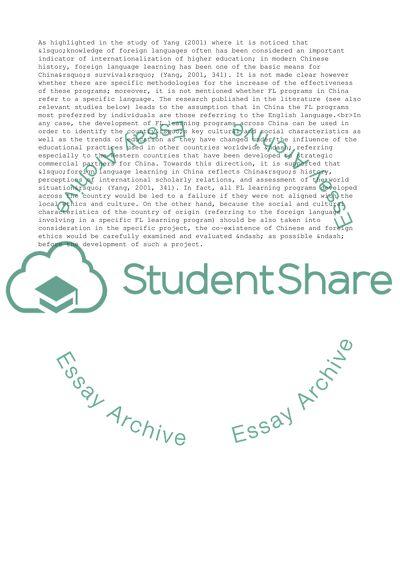Cite this document
(Motivation Types of Chinese EFL Learners and Relevant Motivation Research Paper, n.d.)
Motivation Types of Chinese EFL Learners and Relevant Motivation Research Paper. Retrieved from https://studentshare.org/management/1717116-motivation-types-of-chinese-efl-learners-and-relavant-motivation-strategies
Motivation Types of Chinese EFL Learners and Relevant Motivation Research Paper. Retrieved from https://studentshare.org/management/1717116-motivation-types-of-chinese-efl-learners-and-relavant-motivation-strategies
(Motivation Types of Chinese EFL Learners and Relevant Motivation Research Paper)
Motivation Types of Chinese EFL Learners and Relevant Motivation Research Paper. https://studentshare.org/management/1717116-motivation-types-of-chinese-efl-learners-and-relavant-motivation-strategies.
Motivation Types of Chinese EFL Learners and Relevant Motivation Research Paper. https://studentshare.org/management/1717116-motivation-types-of-chinese-efl-learners-and-relavant-motivation-strategies.
“Motivation Types of Chinese EFL Learners and Relevant Motivation Research Paper”, n.d. https://studentshare.org/management/1717116-motivation-types-of-chinese-efl-learners-and-relavant-motivation-strategies.


